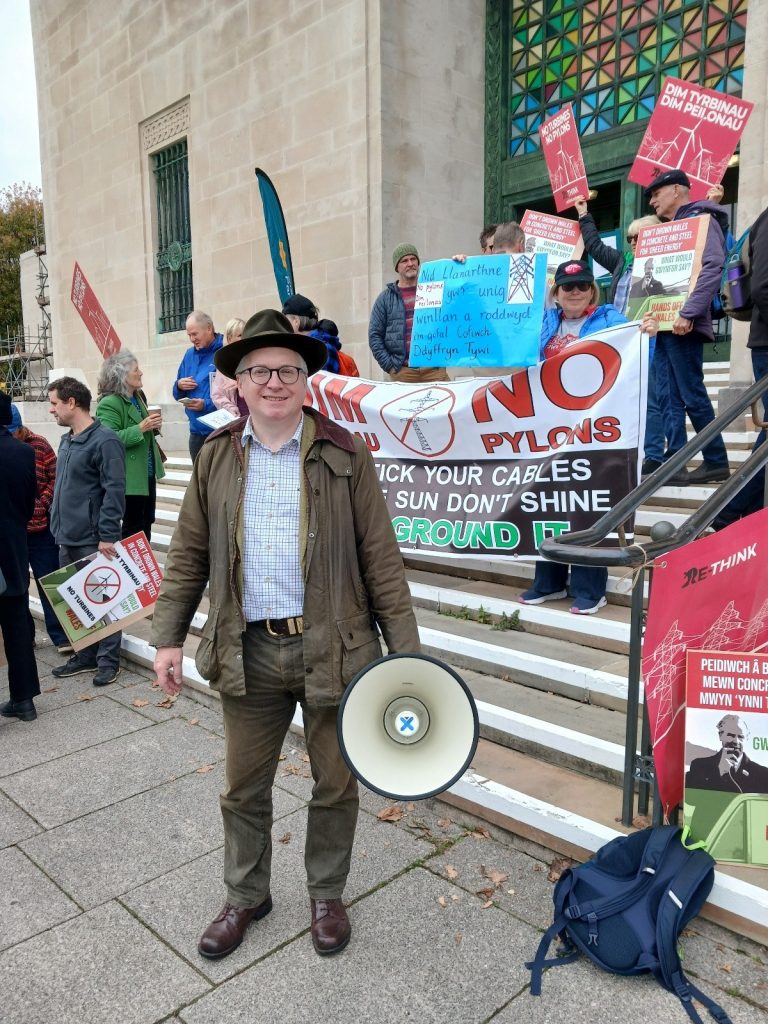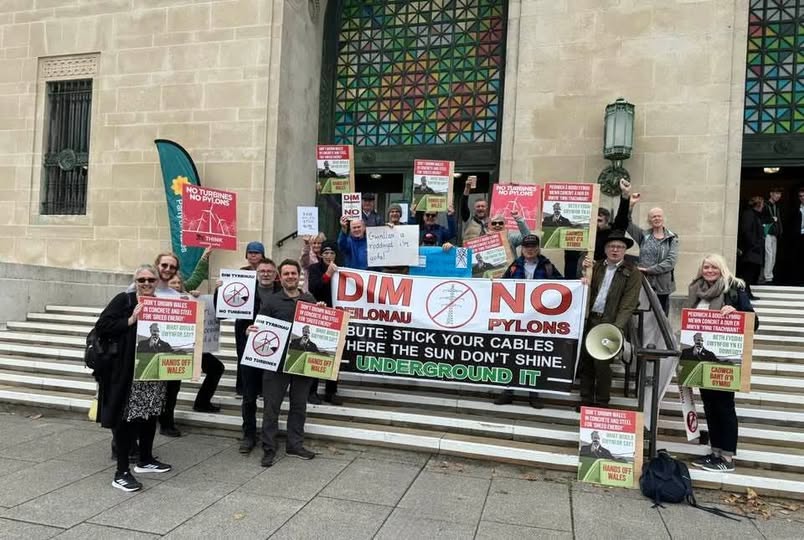Under the leadership of Havard Hughes, who serves as the spokesperson for the Carmarthenshire Residents Action Group (CRAiG) and as the Vice Chairman of Our Tywi Valley (Llandeilo Community Group Against Pylons), a protest occurred outside the Plaid Cymru Conference in Swansea. This demonstration was organized in response to the extensive development challenges currently confronting Carmarthenshire, associated with proposed pylon routes, energy parks, solar farms, and related infrastructure.
Mr. Hughes contends that developments planned at Bryn Cadwgan, Brechfa (Glyn Cothi), and Bute Energy’s Nant Ceiment represent systematic industrialization, is being facilitated by the Welsh Government’s designation of one-third of Carmarthenshire as an industrial wind zone in the Future Wales 2040 strategy, which also includes a solar energy zone in the southern region of the county.
Numerous communities are at risk of becoming encircled by energy infrastructure, facing a decade of disruption due to the construction of roads through rural landscapes, the building of bridges to accommodate large machinery, and the establishment of quarries in hillside terrains. Mr. Hughes believes that “People are seeking support from their political representatives but are feeling increasingly overlooked by local politicians and the Government in Cardiff.” Plaid Cymru emerged as a movement influenced significantly by campaigner Gwynfor Evans, who galvanized the people of Wales against the submergence of the Tryweryn Reservoir, also known as Llyn Celyn. This controversial reservoir project, completed in 1965, resulted in the forced displacement of approximately 70 residents and remains a poignant and contentious issue in Welsh history. The term “The Drowning” is remembered by many as a traumatic and defining event, inciting some activists to resort to violence in their protests; it also inspired the phrase “Cofiwch Dryweryn,” which has been repurposed by groups opposing the construction of pylons and wind farms.
There exists a perception among some individuals that there are significant parallels between the current surge of proposals threatening not only Carmarthenshire but also large portions of Wales, which seem designed primarily to benefit distant interests at the expense of Welsh communities and rural landscapes. This situation generates a sense of political disenfranchisement as the detrimental effects of such large-scale infrastructure projects are viewed as a continuation of historical exploitation, wherein Wales and its resources are leveraged to serve external interests. The prevailing concern is that Wales may become overwhelmed by concrete and steel in the pursuit of ‘greed energy‘.
Mr. Hughes aims to mobilise communities and individuals against the ongoing influx of proposals affecting the area, and used the Plaid conference as a platform to show the strength of feeling against the projects and to remind attendees of Gwynfor Evans’s contributions to the party, his advocacy rooted in personal patriotism and a commitment to democracy and local communities. Currently, there is a notable feeling of democratic deficit among communities, as campaigners opposing pylon and wind farm initiatives argue that their concerns have been dismissed by developers and government officials within a prevailing “top-down approach.”
Posters at the protest yesterday asked ‘ What would Gwynfor say?’ It is probable that Gwynfor Evans would feel as strongly about the flooding of rural Wales with concrete and steel as he did about the flooding of the valley and would be lending his voice to those protesting against a what could be seen as history repeating itself.


